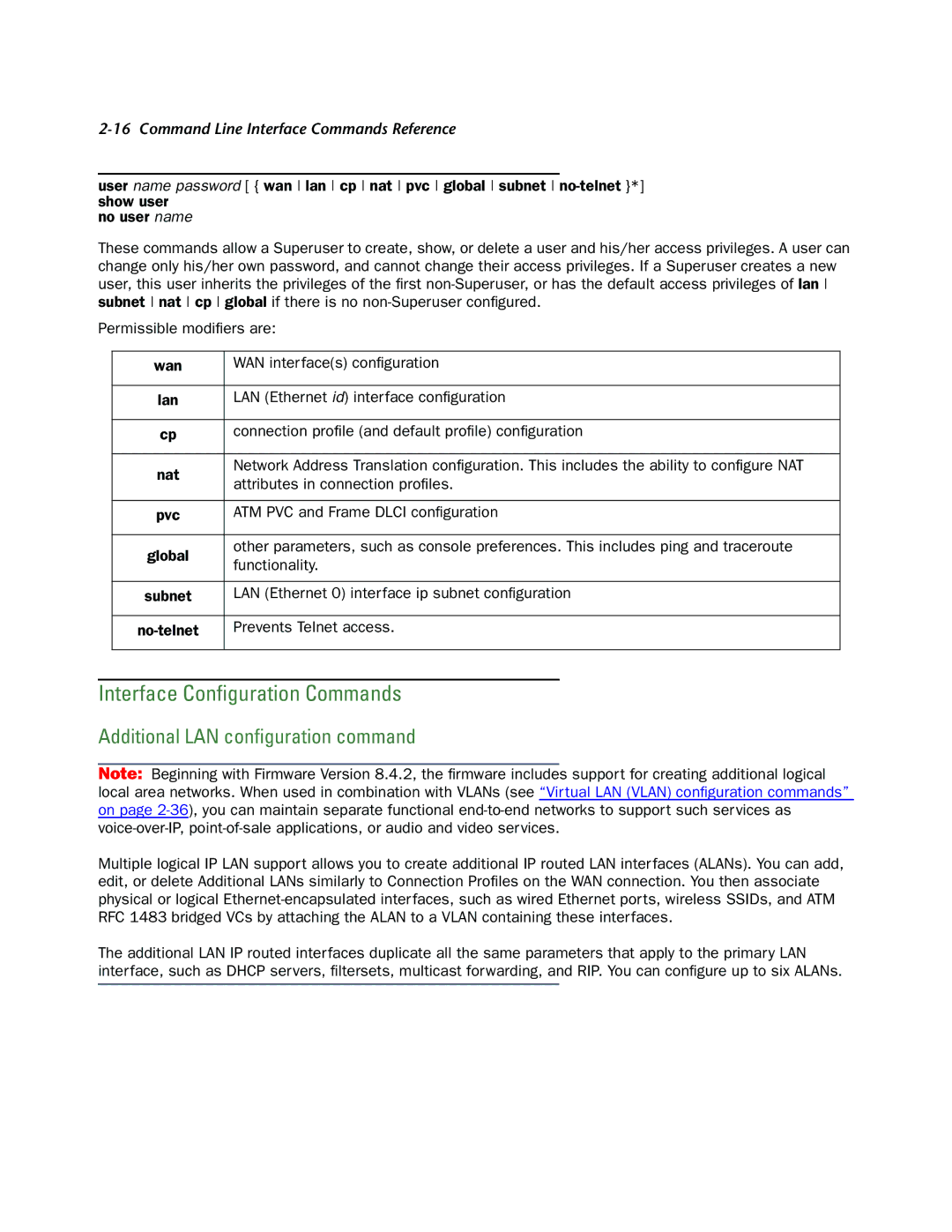
2-16 Command Line Interface Commands Reference
user name password [ { wan lan cp nat pvc global subnet
no user name
These commands allow a Superuser to create, show, or delete a user and his/her access privileges. A user can change only his/her own password, and cannot change their access privileges. If a Superuser creates a new user, this user inherits the privileges of the first
Permissible modifiers are:
wan | WAN interface(s) configuration | |
|
| |
lan | LAN (Ethernet id) interface configuration | |
|
| |
cp | connection profile (and default profile) configuration | |
|
| |
nat | Network Address Translation configuration. This includes the ability to configure NAT | |
attributes in connection profiles. | ||
| ||
|
| |
pvc | ATM PVC and Frame DLCI configuration | |
|
| |
global | other parameters, such as console preferences. This includes ping and traceroute | |
functionality. | ||
| ||
|
| |
subnet | LAN (Ethernet 0) interface ip subnet configuration | |
|
| |
Prevents Telnet access. | ||
|
|
Interface Configuration Commands
Additional LAN configuration command
Note: Beginning with Firmware Version 8.4.2, the firmware includes support for creating additional logical local area networks. When used in combination with VLANs (see “Virtual LAN (VLAN) configuration commands” on page
Multiple logical IP LAN support allows you to create additional IP routed LAN interfaces (ALANs). You can add, edit, or delete Additional LANs similarly to Connection Profiles on the WAN connection. You then associate physical or logical
The additional LAN IP routed interfaces duplicate all the same parameters that apply to the primary LAN interface, such as DHCP servers, filtersets, multicast forwarding, and RIP. You can configure up to six ALANs.
